Most probably all of you reading this know about the Volkswagen Golf GTI – the “Daddy” of all hot-hatchbacks. This review is for its fifth-generation but made in a different shape and with a different badge. The second-generation Seat Leon, with factory designation Typ 1P, was made from 2005 to 2012 in Spain. The chief designer – Mr Walter de Silva and his team deserve admirations for the uniqueness of the design, according to many, including me. The car has several awards for its looks and for its overall capabilities, winning an enviable number of the car-of-the year type of prizes. Now let’s see how it had stood the test of time.
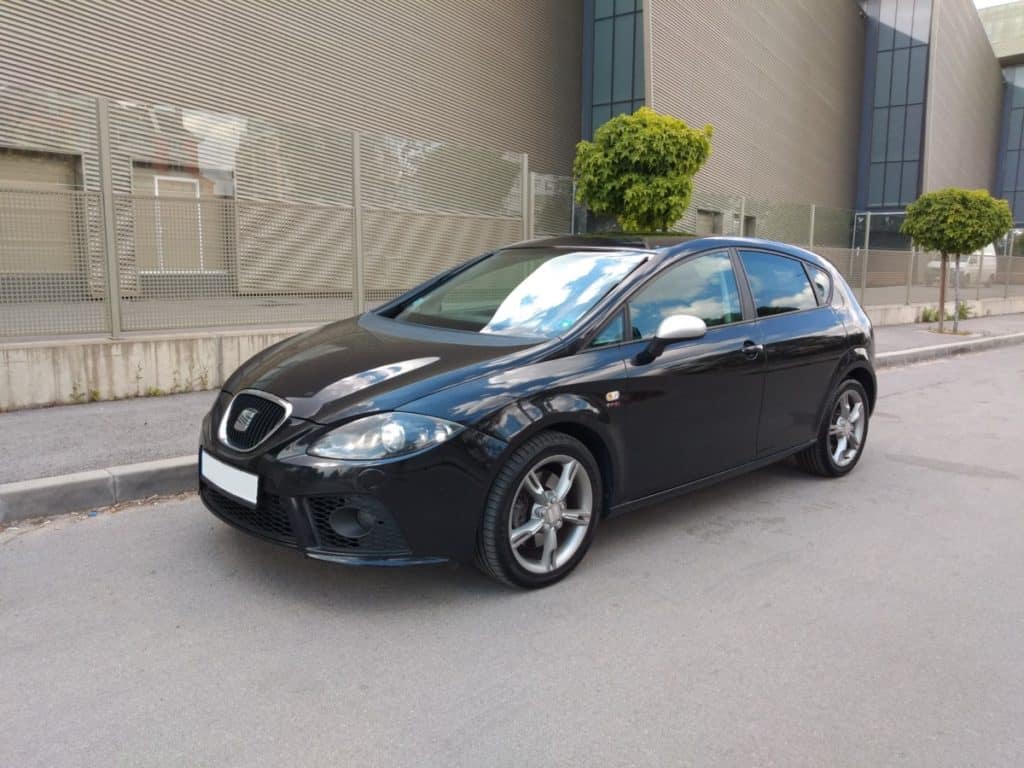
Exterior
Although maybe not all people will appreciate the design of the 2nd Leon, the forms of the car are really quite unique. It is a radical evolution over the first generation and bears the design language of the Altea, introduced in 2004. Like the other cars from the Volkswagen Group, the exterior elements of the Typ 1P are not known to suffer from rust extensively.
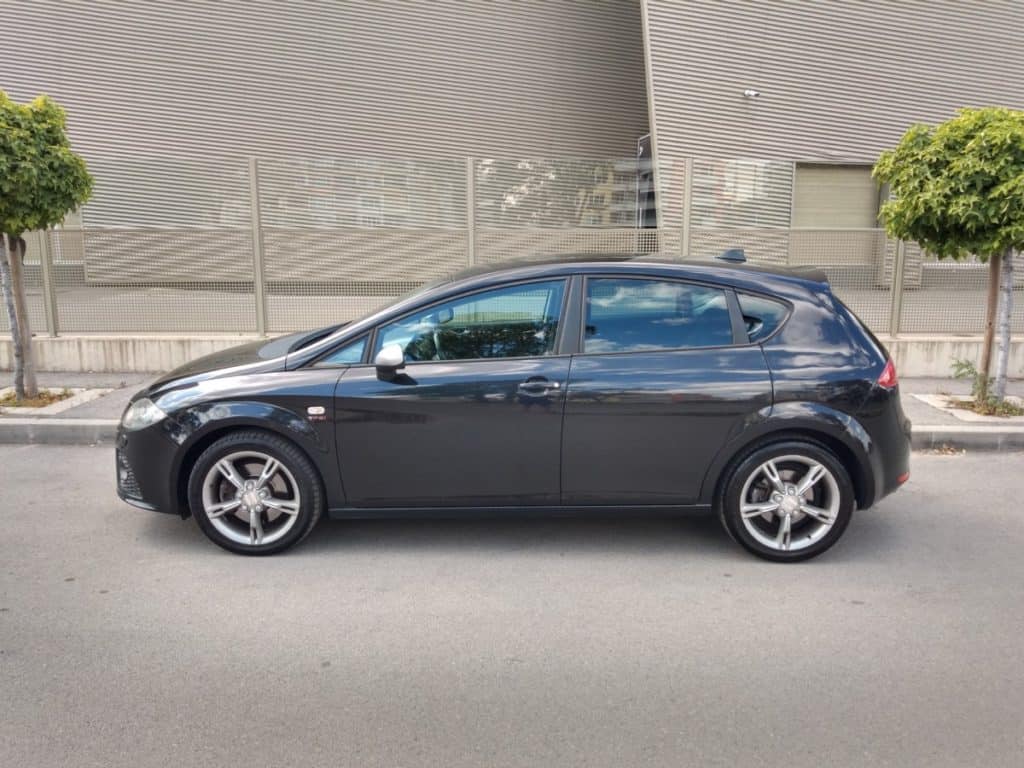
If the FR badge is missing from the boot lid, there are a few exterior touches that will hint to you that you are looking at an FR rather than an ordinary Leon. The front and rear bumpers on the FR are more aggressive and sporty, and the wheels are different styling.
The car is 432.3 cm or 170.2 inches in length, its width is 176.8 cm or 69.61 inches, and the height is 145.8 cm or 57.4 inches.
Interior
The interior also is a bit different in the FR than in the less-powerful versions. The most distinctive contrast, when you open the door, is most probably the FR logo stamped on the front of the wonderfully comfortable Recaro front seats.
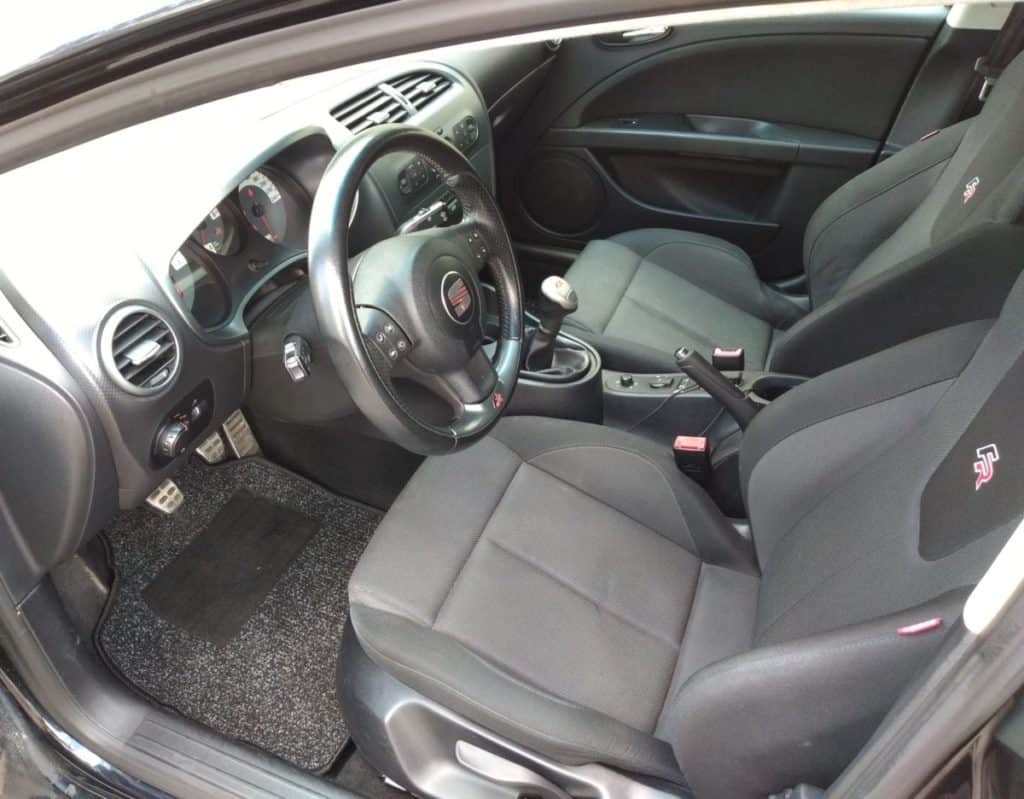
Also on the steering wheel’s bottom is situated a grey plastic, which has the FR logo. It looks good, but it is plastic nonetheless. Apart from this, you will most probably notice the interesting form of the gear lever, which also has a grey plastic on top, reminding you that you are in an FR. The gear lever top and most of the buttons will wear out like in other VW Group cars from the same period. Speaking of these covers… unfortunately, it is not only them. The interior is inundated with heinous plastics. Virtually everything on the inside of the car (without the seats maybe) is plastic and not from the nice type. I felt like sitting in a Tic Tac container. When you tap on any part of the dashboard, it sounds and feels as being thin and cheap. The centre console between the driver’s and front passenger’s seat is made from an especially nasty breed of plastic – one that often becomes slightly greasy and sticky over time. At least there is some consolation that the dashboard’s design is interesting as the Leon’s exterior. But this may not cut it for some of the enthusiasts for which this car was conceived. We, the enthusiasts, tend to be more fastidious about our experiences in a car. This is typical for connoisseurs in any sphere. And I understand that the Leon has to sit lower in the food chain than the Golf but should it really be that bad? With the facelift in 2009, the situation was mitigated a bit but still remains subjectively questionable.
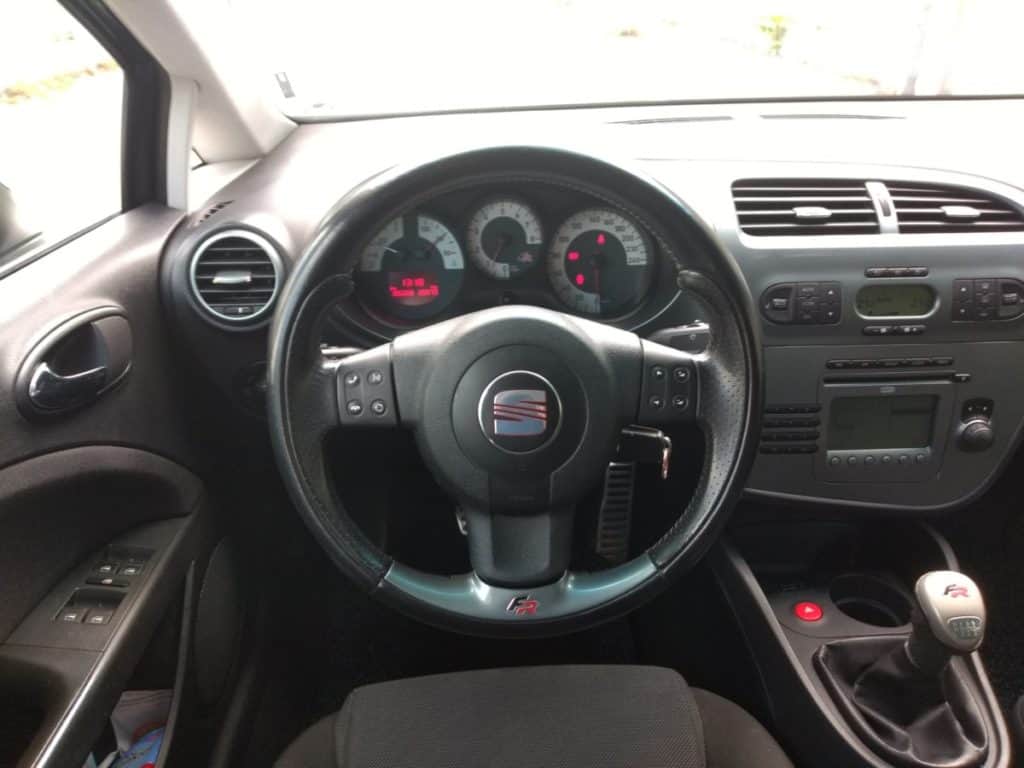
Other than the above, the car is aptly spaced and four mid-sized people can travel well. The front seats, as already mentioned are very comfortable and hugging, which gives you the feeling that you are integrated into the car. The seating position is spot-on.
In terms of practicality in the cabin, you get three cup holders – one below the dashboard and two in the centre console. The boot capacity is 340 litres. Being a VW production, the Leon has a lot of extras for which you could have opted when the car was new, apart from the standard equipment. Our example had cruise control, a 12V outlet, xenon headlights, an AUX outlet, heated seats, light and rain sensors and tyre pressure sensors, among others more expected ones like electric windows and door mirrors, climate control and radio.
In terms of issues regarding the interior of the car, we have to mention some wiring-related ones that can occur. Examples being ECU errors, issues with the car’s fuses, the boot’s electric latch, window operators and door mirrors, air conditioning problems, windscreen wipers, lights, faulty central locking, issues with the ESP. Also, earlier models have been known to experience an irritating problem with the alarm. Namely – it going off for no apparent reason. A new door control module with new software will usually see this issue out.
Engines
And if the car’s exterior design was innovative for its age, its engine also was. We are only going to be reviewing the petrol version of the FR, and this generation of VW cars was the first with the modern gasoline direct injection (GDI) technology. Pre-facelifted FRs are equipped with the VW’s 16 valve dual-overhead-cam “BWA” engine – a 2.0-litre turbocharged unit producing about 195 hp and 280 Nm of torque. Post-facelifted ones get the internally designated “CCZB”, which has practically the same displacement but with a larger intercooler, which helped produce around 205 hp. The torque figures are the same – at 280 Nm. Pre-facelift, the engine model is marketed as TFSI and after the facelift, VW changed the designation to TSI.
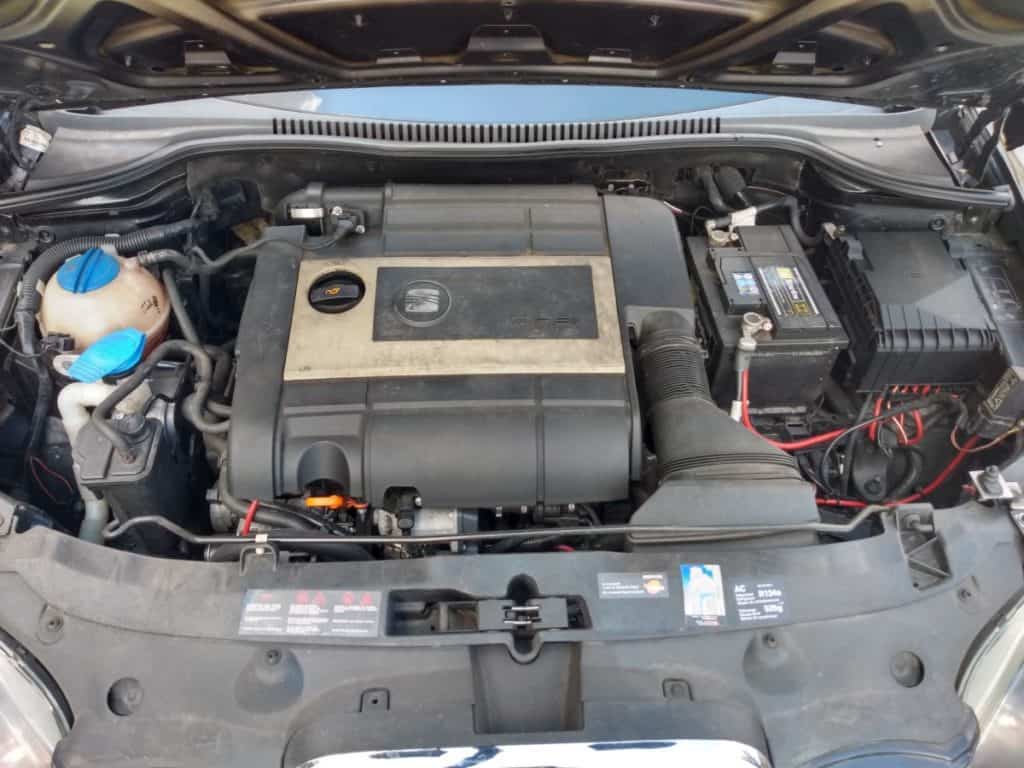
Alas, the GDI has some design flaws like clogging up of the injectors and intake valves, which require cleaning once in a while. Occasional juddering, if the clogging is minor, and troubled starts, especially in cold weather, are factors to be considered. You can read more about the GDI engine technology here. Other than the aforementioned design flaws, though, there is little to report in terms of issues. Two problems are worth mentioning, though. Firstly, FR and Cupra Leons tend to have oil leaks. You may need to top-up the oil once in a while. Secondly, there are reports of water pump failures. If you have to choose only between the older or newer engine, though, maybe go for the TFSI. It has fewer reported issues as some of the TSI engines suffer from problems with the timing chain too. All in all, the engines are pretty reliable and, more importantly for some, quite tuneable. Also, the parts are easy to source and affordable.
Gearboxes
Another issue throughout the range of the FR model is with its 6-speed manual gearbox. Although it is very light and generally great to operate with, it tends to have faults with the selectors in some of the cars. The problem may be in the face of hesitations when selecting 1st or 2nd (this may be fixed by changing the gearbox’s oil) or something more severe like losing gears. The latter can be experienced either in the gear lever going back to neutral on its own opinion or in remaining in the slot but without engaging the selected gear. Of course, you will need to have it looked into by a professional.
The automatic transmission integrated into the Leon – a DSG unit (model DQ250) is known to give more faults. The first that I would like to discuss is vibrations from the gearbox. This can be attributed to two reasons. Either the flywheels get away from each other too much, or the dual-clutch assembly is getting amortized. If, when diagnosed by a professional, it turns out to be the flywheels, the issue is better to be rectified as soon as possible since the situation can deteriorate fast and may result in the inability to select any gears. If it turns out to be the clutch, it is simple wear and tear of this component, and eventually, it will need a replacement. However, it is not something that usually requires immediate attention and can be postponed if you are not irritated by the shuddering too much. The next problem – if you see flashing of the light for your gearbox on the dashboard, it can be the mechatronics. This can potentially be a pricey repair but make sure that you go to someone who can really diagnose it properly. Another symptom of this issue is the loss of the reverse gear. The third issue is selector failures – usually expressed in the inability to start the car, disengaging gears or loss of ability to change them. Sometimes this can be due to wiring issues. The next DSG problem you may encounter is unexpected and unpleasant sounds from the gearbox. This is usually accredited to the bearings in the gearbox and it’s good to have it checked immediately because if a bearing breaks down, it can cause catastrophic damage to the whole DSG unit. Finally, instances of leaks of gearbox fluid and overheating are also reported by owners.
Don’t forget that you have to change the gearbox oil, regardless if it is the manual or the DSG, on every 50-60K kilometres (30-35K miles).
Driving it
So what is the Seat Leon FR Typ 1P like to drive? In a nutshell – the car is very balanced and easy to drive. The pedals are weighted to perfection, the shifts are short and light, the steering wheel seems to be directly connected to your brain, the suspension is sporty but not too harsh, and overall the engine has a great setup.
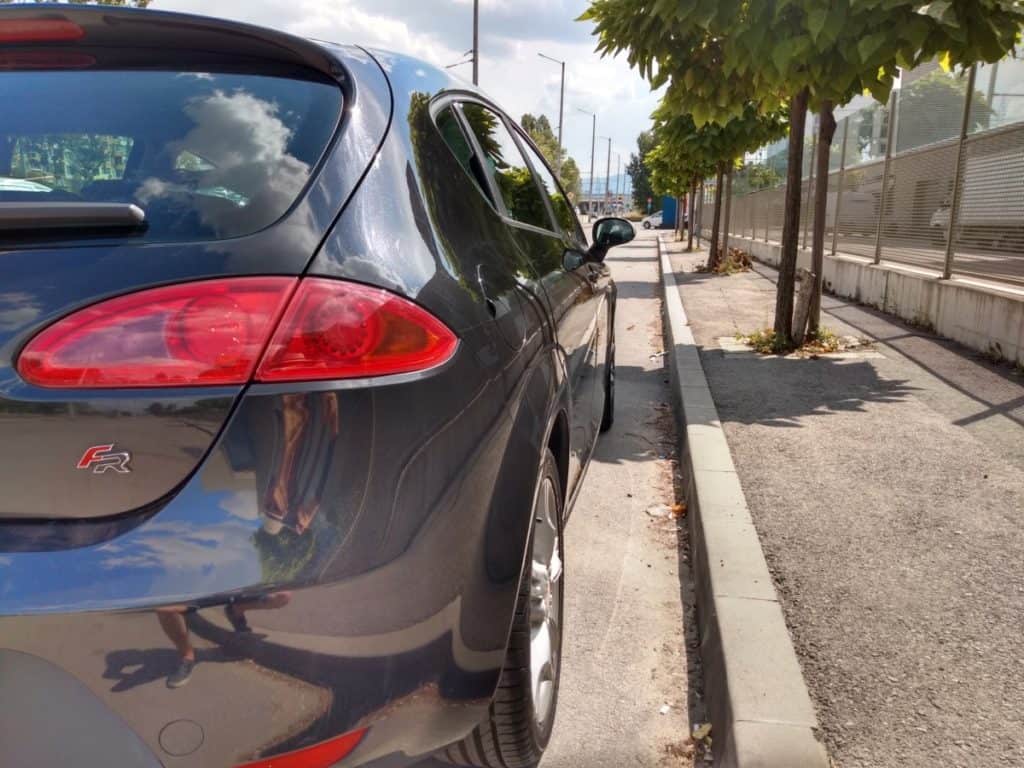
It is a true hot-hatch. The way this thing corners is like karting. We have to note that under heavy cornering, while driving fast, the car will understeer, but you should be rather reckless to get it to this point. Most of the time, the chassis and suspension setup will do a great job in keeping you away from trouble. I drove it on a beautiful mountain bit of road and the car can easily enter a reasonably tight bend with 60-65 km/h and exit with the same speed without a single tap of the breaks in between. You would let the car slow down a bit on its own by entering the corner, without breaking, and on the apex start accelerating again. The Leon can handle it and it is a joy. The ride is hard, but the seats are so comfortable that they seem to take away a lot of the harshness.
The first impression of the engine was a bit of a surprise for me too. It pulls unexpectedly well, almost anywhere above 1800 revs, but it is very responsive even up to that point. There is no noticeable turbo lag, and the way the power is delivered is astonishing. The engine feels bigger and very capable. The overtaking is elementary.
Also, you won’t regret it in terms of driving if you get it with the DSG. If you don’t feel like changing the gears yourself, you can put it on the comfort mode and the changes will be smooth. If you go for Sport, the engine will rev to red before changing up, and if you go for manual mode, you will get blisteringly fast changes using the paddle shifts.
The Seat Leon is manoeuvrable for city driving and parking and great in extra-urban scenarios since the car does not feel cramped and generally does not fatigue you. After driving 400 kilometres on the highway, I felt that I can go back immediately without having a break. Of course, that being said, try to get one with a cruise control if you are after such a Leon.
Downsides? A couple. The first of which is the road noise. You will experience some, especially from tyre roll. In this respect, you may achieve something by fitting quieter tyres. The other drawback is related to a bit poor visibility. When you drive this Seat, especially in town, your sight is slightly obstructed by the wide front and rear pillars.
Last but not least – don’t forget that this is a turbo car and you have to exercise the proper treatment of the turbocharger if you want to prolong its life. Namely, when you start up the car, do not depart immediately but wait for a minute or two before that. Also, when you reach your destination – let it cool down a bit by shutting down the engine again after one or two minutes.
Conclusion
So is the Seat Leon FR Typ 1P any good as a used car? In a nutshell – yes. If you pay attention to the gearbox before buying, can live with the nasty plastic interior and the electrical haywires, which are actually common for a lot of cars, you will get a great to drive, practical car which is suitable for most occasions. It is still cheaper on the used-car market than its sibling – the Golf GTI and offers a surprisingly good value (in my humble opinion, better than the Golf). So in a true hot-hatch spirit, the Seat Leon FR Typ 1P is all things to all men/women.
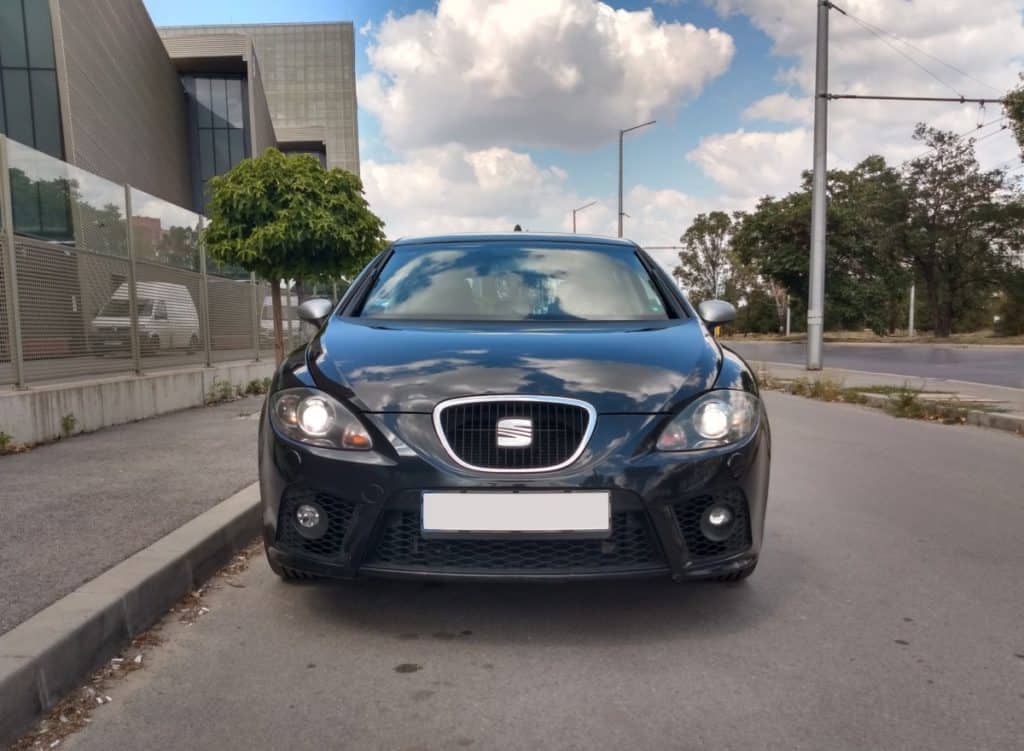
As always, I hope you have found this article helpful and stay tuned for the next!